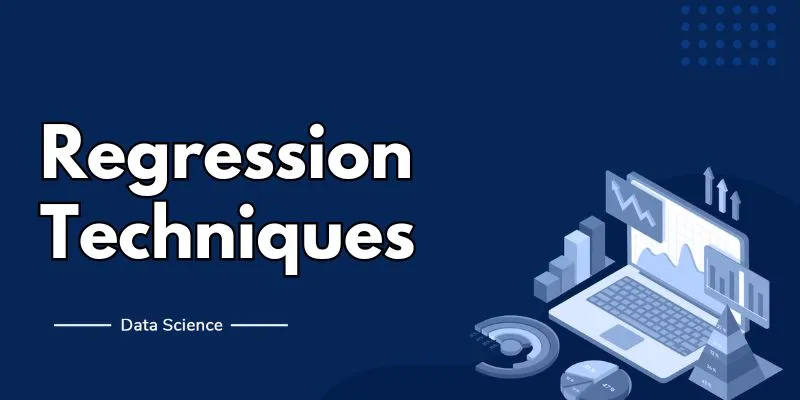Understanding Regression Techniques in Data Science
Regression analysis is a fundamental technique in data science used for modeling the relationship between a dependents variable and one or more independent variables. This powerful statistical tool allows data scientists to make predictions, identify trends, and uncover insights from data. In this blog, we will delve into the various regression techniques commonly used in data science, their applications, and their significance. Unlock your Data Science potential! Enrol on a data science journey with our Data Science Course in Chennai. Join now for hands-on learning and expert guidance at FITA Academy.
Introduction to Regression Analysis
Regression analysis is essential for predicting outcomes and understanding relationships between variables. It provides a framework for modelings and analyzing the behavior of complex systems, making it invaluable in fields like finance, healthcare, marketing, and more. By fitting a regression model to data, we can predict future values, identify key factors influencing outcomes, and optimize decision-making processes.
Simple Linear Regression
Simple linear regression is the most basics form of regression analysis, where the relationship between two variables is modeled by fitting a linear equation to the observed data. The equations of a simple linear regression line is:
y=β0+β1x+ϵy = \beta_0 + \beta_1x + \epsilony=β0+β1x+ϵ
Here, yyy is the dependent variable, xxx is the independent variable, β0\beta_0β0 is the y-intercept, β1\beta_1β1 is the slope of the line, and ϵ\epsilonϵ represents the error term.
Applications:
- Predicting sales based on advertising expenditure.
- Estimating a person’s weight based on their height.
Multiple Linear Regression
Multiple linear regression extends simple linear regression by modelings the relationship between a dependent variable and multiple independent variables. The equation for multiple linear regression is:
y=β0+β1×1+β2×2+⋯+βnxn+ϵy = \beta_0 + \beta_1x_1 + \beta_2x_2 + \cdots + \beta_nx_n + \epsilony=β0+β1x1+β2x2+⋯+βnxn+ϵ
Here, x1,x2,…,xnx_1, x_2, \ldots, x_nx1,x2,…,xn are the independent variables.
Applications:
- Predicting house prices based on features like sizes, location, and number of bedrooms.
- Estimating a student’s academic performance based on study hours, attendance, and previous grades.
Learn all the Data Science techniques and become a data scientist. Enroll in our Data Science Online Course.
Polynomial Regression
Polynomial regression is a types of regression analysis in which the relationship between the independentvariables and dependent variables is represented as an n-degree polynomial. The equation for a polynomial regression can be written as:
y=β0+β1x+β2×2+⋯+βnxn+ϵy = \beta_0 + \beta_1x + \beta_2x^2 + \cdots + \beta_nx^n + \epsilony=β0+β1x+β2x2+⋯+βnxn+ϵ
This technique is useful when the data shows a nonlinear relationship.
Applications:
- Modeling the growth rate of a population over time.
- Estimating the performance of a new product over its lifecycle.
Ridge and Lasso Regression
Ridge and Lasso regression are techniques used to address multicollinearity and overfitting in regression models. Both methods add a regularization term to the linear regression equation to penalize large coefficients.
Ridge Regression adds an L2 penalty (the square of the magnitudes of coefficients) to the loss function:
Loss=RSS+λ∑i=1nβi2\text{Loss} = \text{RSS} + \lambda \sum_{i=1}^{n} \beta_i^2Loss=RSS+λ∑i=1nβi2
Lasso Regression adds an L1 penalty (the absolute value of the magnitude of coefficients) to the loss function:
Loss=RSS+λ∑i=1n∣βi∣\text{Loss} = \text{RSS} + \lambda \sum_{i=1}^{n} |\beta_i|Loss=RSS+λ∑i=1n∣βi∣
Applications:
- Feature selection in high-dimensional datasets.
- Improving model generalization by reducing overfitting.
Logistic Regression
Logistic regression is used for binary classifications problems, where the dependent variable is categorical. The logistic function (sigmoid function) maps the predicted values to probabilities between 0 and 1. The equation for logistic regression is:
P(y=1∣x)=11+e−(β0+β1×1+β2×2+⋯+βnxn)P(y=1|x) = \frac{1}{1 + e^{-(\beta_0 + \beta_1x_1 + \beta_2x_2 + \cdots + \beta_nx_n)}}P(y=1∣x)=1+e−(β0+β1x1+β2x2+⋯+βnxn)1
Applications:
- Predicting whether an email is spam or not.
- Determining the likelihood of a customers defaulting on a loan.
Regression techniques are a cornerstone of data science, offering valuable tools for prediction and analysis. From simple linear regressions to more complex methods like ridge, lasso, and logistic regression, these techniques provide insights into relationships within data and help in making informed decisions. Understanding and applying the appropriate regression technique can significantly improve the reliability of data science models, ultimately driving better outcomes in various fields. As data continues to grows in complexity and volume, mastering these regression techniques will remain a crucial skill for data scientists. Explore the top-notch Advanced Training Institute in Chennai. Unlock coding excellence with expert guidance and hands-on learning experiences.
Read more: Data Science Interview Questions and Answers

